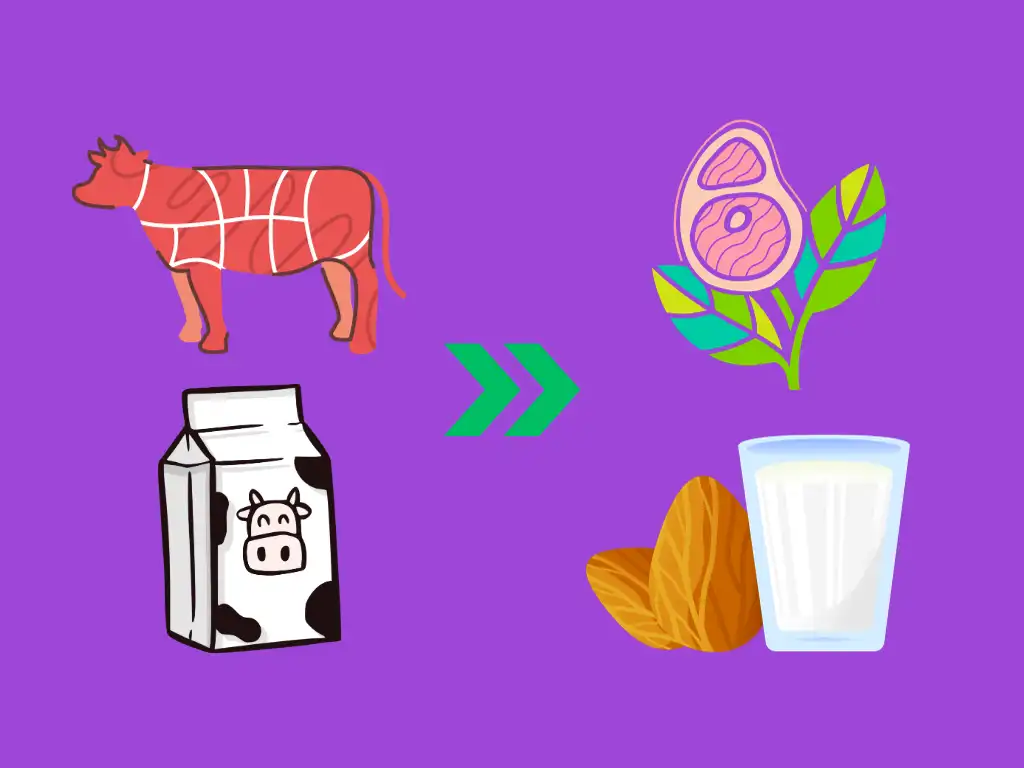Living more sustainably doesn’t have to mean going to extremes. While the urgency of the climate crisis can make it feel like an all-or-nothing commitment stop flying, give up meat, go zero waste new research confirms that small, gradual steps can make a massive difference. One of the most impactful changes? Swapping just 50% of your meat and dairy intake with plant-based alternatives.
Cutting Animal Products in Half Has Global Impacts
A recent study published in Nature Communications highlights how reducing meat and milk consumption by half could significantly ease pressure on the environment. The study was led by researchers from the University of Vermont (UVM), the International Institute for Applied Systems Analysis (IIASA), and the Alliance of Bioversity International and CIAT. Using a global land-use economic model, the team assessed the ripple effects of shifting diets toward plant-based foods.
Beef Replacement Matters Most But Synergy Counts
While cutting beef delivers the biggest environmental payoff, the study notes that replacing multiple animal products simultaneously including pork, chicken, and milk creates a synergistic effect. By doing so, researchers found that we could dramatically reduce greenhouse gas emissions, slow deforestation, and improve global nutrition outcomes.

What the 50% Swap Could Accomplish by 2050
Here’s what the researchers project if half of animal products were replaced with plant-based alternatives:
- A 12% reduction in global agricultural land use — reversing the current trend of expansion.
- Forest and natural land loss is nearly halted — providing room for ecosystem recovery.
- Nitrogen inputs drop by nearly 50% — easing soil and waterway contamination.
- Water use declines by 10% — instead of increasing with agricultural demand.
- GHG emissions fall by 31% — roughly 2.1 gigatons of CO₂-equivalent emissions per year by 2050.
- Global undernourishment falls to 3.6% — lifting 31 million people out of hunger.
Restoring Land Could Double the Benefits
In addition to the direct impact of dietary changes, the study also considers what happens to land no longer used for raising livestock. If that land is restored through reforestation or biodiversity-friendly afforestation, the climate benefits more than double. That rewilded land could also contribute up to 25% of the global restoration targets outlined in the Kunming-Montreal Global Biodiversity Framework by 2030.

Not Just a Trend — A Path Forward
“Plant-based meats are not just a novel food product,” said co-author Eva Wollenberg from UVM. “They are a critical opportunity to meet food security, climate, health, and biodiversity goals.” The research adds that plant-based recipes modeled in the study were designed to match the nutritional profiles of meat and milk, and are feasible within current food production systems.
Why This Matters
Animal source foods (ASFs), while accounting for less than 20% of global food calories, are disproportionately responsible for land degradation, water overuse, biodiversity loss, and high emissions. The findings underscore that encouraging even partial reductions in ASF consumption not complete elimination is a powerful strategy to keep environmental impacts within planetary limits.
Simple Steps to Start Making a Difference
You don’t have to go vegan overnight. Start small:
- Use a plant-based milk in half of your coffee each day.
- Blend mushrooms into your burger patties.
- Try “Meatless Mondays” and then expand from there.
- Explore products from emerging plant-based brands that offer alternatives to chicken, pork, and beef.
Every swap helps. Reducing meat and dairy consumption by just 50% is enough to move the needle not just for the climate, but for forests, water systems, and food security around the world. So take a step, however small. The planet and its future inhabitants will thank you.





